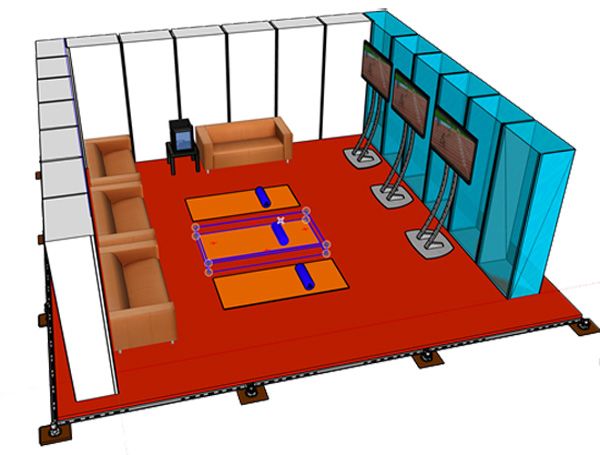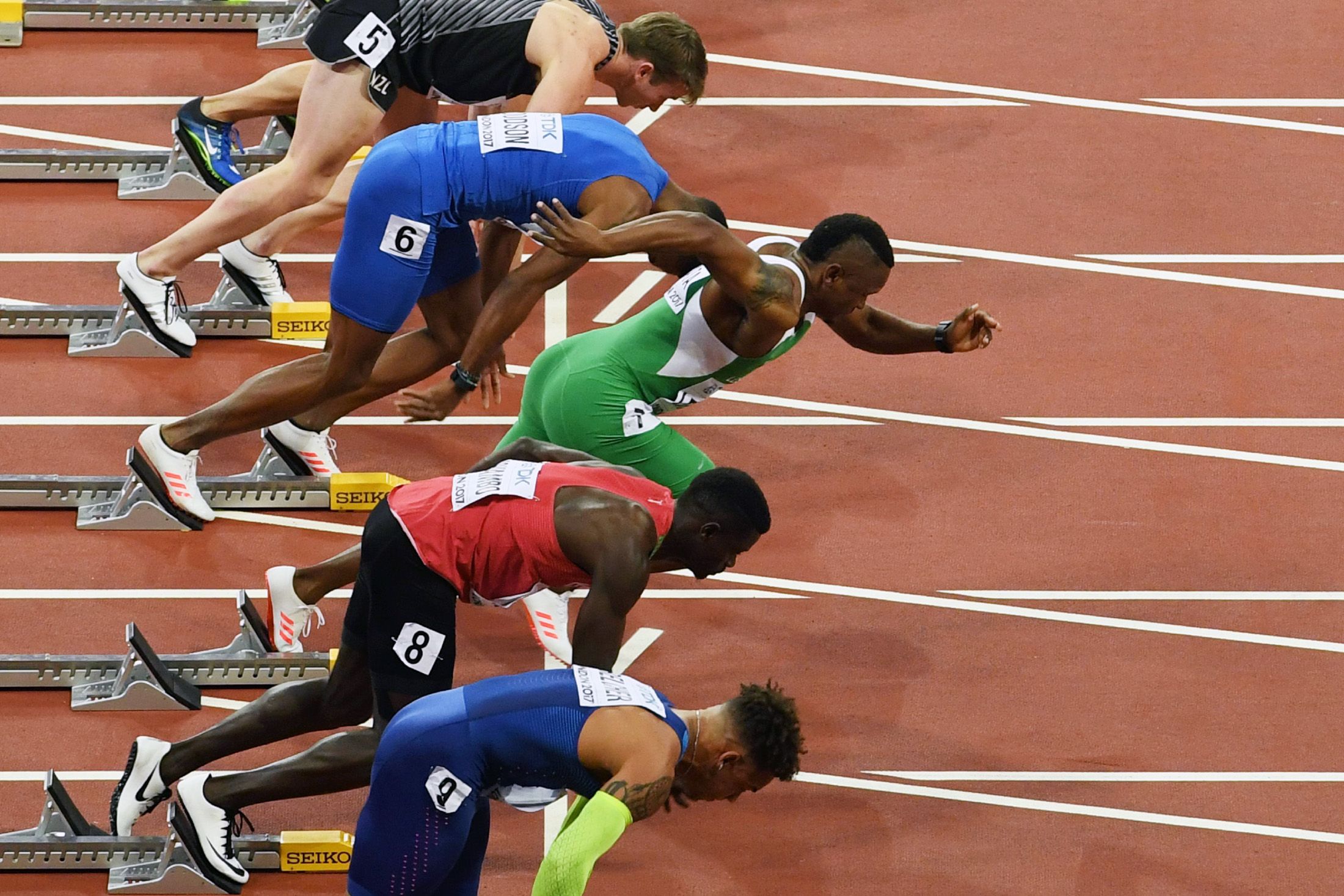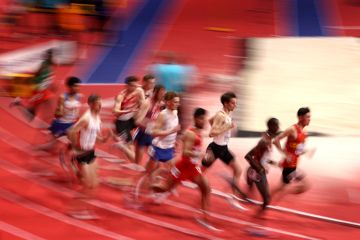Athletes in the 1500m at the World Championships (© AFP / Getty Images)
Recent changes to rules and event presentation – many of which were announced earlier this year – will enhance the experiences of athletes and fans alike at the World Athletics Championships Budapest 23 from 19-27 August.
These changes will be seen for the first time in Budapest and will be utilised for other World Athletics Series track and field championships going forward.
Lane draws
The seeding for lane draws in track events has been amended to create a different allocation after the first round, following submissions from elite athletes and coaches.
From Budapest onwards, the groupings for lane draw allocation will be as follows:
| Draws | All (old) | Straight (new) | 200m (new) | 400m (new) |
| Top ranked | 3, 4, 5, 6 | 3, 4, 5, 6 | 5, 6, 7 | 4, 5, 6, 7 |
| Next ranked | 7, 8 | 2, 7 | 3, 4, 8 | 3, 8 |
| Last ranked | 1, 2 | 1, 8 | 1, 2 | 1, 2 |
The same will apply to the combined events, where the qualification best in a heptathlon or a decathlon is to be used for seeding.
Qualification to next round in middle-distance events
For middle-distance events longer than 800m in which athletes qualify by time (after the automatic qualifiers), there has been widespread feedback on the significant disadvantage to athletes in the first heat compared to the athletes in the following heats, due to their knowledge of what time is required to qualify.
From Budapest onwards, qualifying from rounds of the 1500m, 3000m steeplechase and 5000m will be based purely on positions, not time.
| Event (starting athletes) |
Round | Old | New | ||||||
| Heats | Q | q | To next round | Heats | Q | q | To next round | ||
| 1500m (56) | R1 | 4 | 5 | 4 | 24 | 4 | 6 | 0 | 24 |
| SF | 2 | 5 | 2 | 12 | 2 | 6 | 0 | 12 | |
| 3000m SC (36) | SF | 3 | 3 | 6 | 15 | 3 | 5 | 0 | 15 |
| 5000m (42) | SF | 2 | 5 | 5 | 15 | 2 | 8 | 0 | 16 |
Athlete replacement policy
In Budapest, any lanes or starting position left empty due to the withdrawal of an athlete will, where possible, be filled by the next-best ranked athlete.

(© AFP / Getty Images)
This policy will apply to finals and semifinals in all disciplines, including field events and relays. There will be no re-draw of lanes or re-ordering of attempts.
A virtual ‘hot seat’ system will be implemented, where the next-best ranked athlete(s) or teams will be on notice to wait for possible withdrawals. A maximum of two athletes will be considered for each replacement.
The q room
For all sprints, hurdles and 800m events, a room will be set up where non-automatic qualifiers can wait to see if they have advanced. The room will have comfortable chairs on which to relax, TV screens to watch subsequent races, foam rollers and stretch bands, refreshments, as well as access to their coaches and kit.
 Athletes can stay in the room for up to 20 minutes and will then be taken through the mixed zone. The room will have TV cameras, so fans can watch the outcome unfold.
Athletes can stay in the room for up to 20 minutes and will then be taken through the mixed zone. The room will have TV cameras, so fans can watch the outcome unfold.
Running under protest
Athletes have previously been allowed to run under protest if a start referee had doubts over the validity of a false start charge, but not if the false start was indicated by a World Athletics certified start information system.
When the reaction time is close to the allowed limit (0.100), any movement may hardly be visible. Now in cases such as these, if the start referee feels the start in question requires further study, the referee may allow the athlete to run under protest.

(© AFP / Getty Images)
For any run under protest, a final decision is taken by the referee and in turn subject to an appeal to the jury.
Athletes will not be able to run under protest if the false start has been detected by a fully operational start information system or in cases where the false start is clearly visible.
The start referee will announce relevant decisions to the stadium spectators and the television audience.
Throwing implements
Previously, throwers have not been able to use their own throwing implements if the same models are on the list of those provided by the organisers. That restriction has now been lifted. The limit of two implements per athlete remains.













